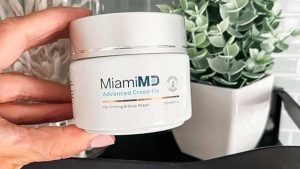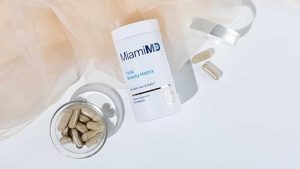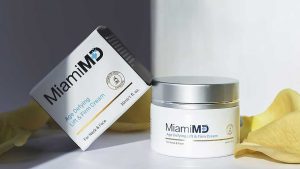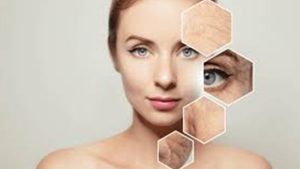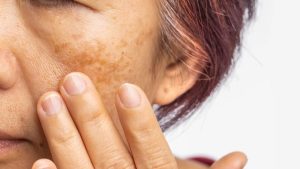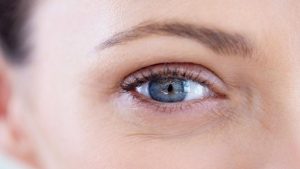How To Reduce and Prevent Pigmentation Issues
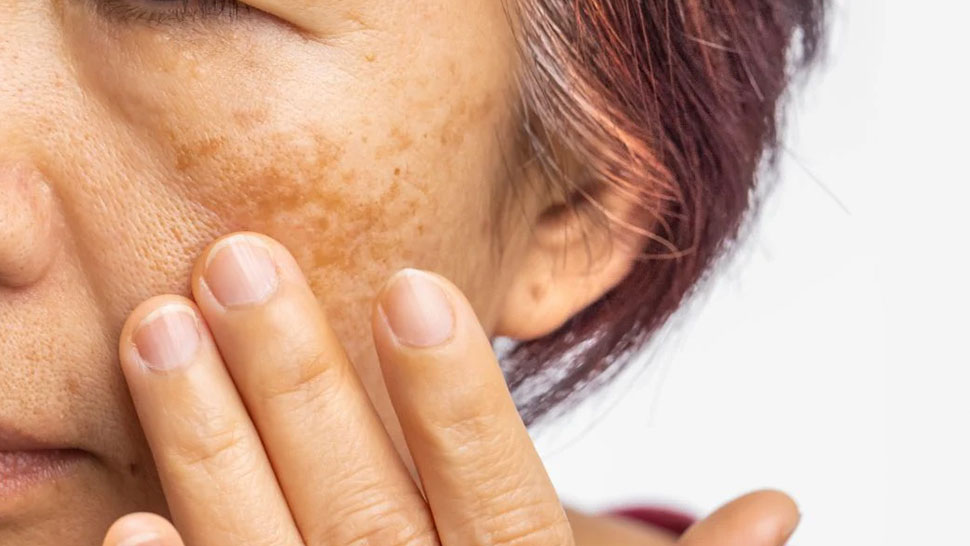
Hyperpigmentation is a common skin concern that affects people of all ages, skin types, and ethnicities.
From dark spots, sun spots, and age spots to uneven skin tone, pigmentation issues can make skin look dull, uneven, and aged. While these concerns are often harmless, they can be frustrating and negatively impact self-confidence.
But here’s the good news. Hyperpigmentation and other pigmentation concerns are manageable and preventable with the right knowledge and skincare routine. Today, we’ll explore the key causes of pigmentation issues, expert-backed strategies to reduce their appearance, and preventative measures to keep your skin glowing and even-toned.
What Contributes to Skin Pigmentation Issues?
Pigmentation issues occur when melanin, the pigment responsible for the color of your skin, hair, and eyes, is overproduced in certain areas. This overproduction can be triggered by a variety of internal and external factors, leading to darker patches or spots on the skin.
Hyperpigmentation, while often harmless, can alter the overall appearance of your complexion, leaving it uneven and dull.
Melanin production is the skin’s natural defense mechanism, often activated to protect you from harmful UV rays or repair damage caused by inflammation or injury. However, when this process goes into overdrive, it can leave behind stubborn discoloration that may linger for months, or even years, if not addressed.
While some pigmentation issues fade over time, others may require targeted treatments or professional intervention to improve. Factors like aging, sun exposure, hormonal fluctuations, and even genetics can all play a role in the development of hyperpigmentation.
By understanding these triggers and how they affect your skin, you can take proactive steps to prevent and manage pigmentation concerns.
Aging
As we age, skin changes in many ways, including the development of pigmentation issues.
Dr. Whitney Bowe, a board-certified dermatologist, explains, “Collagen production and cell turnover slow significantly as we age, which can make dark spots and uneven skin tone more prominent.” Age spots, also called liver spots, are a common form of hyperpigmentation that often appears on areas exposed to the sun, such as the face, hands, and shoulders (1).
In addition to age spots, the skin’s natural regeneration process slows over time. So, damaged skin cells aren’t replaced as efficiently. This can cause pigmentation issues to build up, making them more noticeable.
Sun Damage
Excessive sun exposure is the leading cause of hyperpigmentation and skin discoloration. Harmful UV rays trigger the production of melanin to protect the skin, but over time, this can lead to sunspots, freckles, and uneven pigmentation.
Dr. Doris Day, a dermatologist and author, stresses, “Even minimal sun exposure without protection can accumulate over the years and contribute to pigmentation issues, especially on lighter skin tones” (2).
Prolonged sun exposure not only causes visible pigmentation but also weakens the skin’s ability to repair itself, making existing discoloration harder to treat. It’s important to remember that even indirect exposure, like sitting near a window or walking outside on a cloudy day, can contribute to sun damage over time.
Hormonal Fluctuations
Hormonal changes, particularly in women, are a significant contributor to hyperpigmentation.
Melasma, also known as the “mask of pregnancy,” is a common pigmentation concern that occurs due to hormonal fluctuations during pregnancy, while taking birth control, or during menopause. These hormonal shifts stimulate melanin production, leading to dark patches on the face, typically on the cheeks, forehead, and upper lip.
While hormonal pigmentation can be persistent, it’s often increased by sun exposure. Protecting your skin from UV rays is especially important if you’re prone to melasma. Hormonal changes may also make the skin more sensitive, so it’s crucial to use gentle, dermatologist-recommended products to avoid irritation.
Skin Conditions
Certain skin conditions, such as acne, eczema, or psoriasis, can leave behind pigmentation changes after the skin has healed. This is called post-inflammatory hyperpigmentation (PIH). PIH is more common in darker skin tones, as higher melanin levels make the skin more prone to discoloration after injury or inflammation.
The severity of PIH often depends on how the underlying condition is managed. For example, untreated acne can lead to deeper scarring and discoloration, whereas early intervention can reduce the risk of pigmentation.
Taking a proactive approach to treating skin conditions is essential for preventing long-term discoloration.
Genetics
Genetics also play a role in pigmentation issues. Some individuals are more predisposed to developing freckles, melasma, or hyperpigmentation.
According to Dr. Shereene Idriss, a board-certified dermatologist, “Genetic factors influence how much melanin your skin produces and how it reacts to environmental triggers like sun exposure or inflammation.” (3)
If you have a family history of pigmentation issues, you may need to be extra vigilant about preventative measures. This includes consistent sun protection, maintaining a healthy skincare routine, and avoiding potential triggers like harsh skincare products or excessive heat exposure.
How To Manage and Prevent Skin Pigmentation Concerns
While pigmentation issues can be frustrating, there are effective ways to reduce their appearance and maintain clear, healthy, radiant skin. By combining preventative measures with targeted treatments, you can achieve a more even-looking complexion.
Protect Your Skin From the Sun
Sun protection is the foundation of any pigmentation-prevention routine. Since UV exposure is the leading cause of hyperpigmentation, wearing sunscreen daily is non-negotiable. A broad-spectrum sunscreen with SPF 30 or higher can shield your skin from both UVA and UVB rays, preventing sun damage and worsening pigmentation.
Dr. Joshua Zeichner, director of cosmetic and clinical research in dermatology, emphasizes, “Daily sunscreen use is your best defense against pigmentation and premature aging. Apply sunscreen every morning, even on cloudy days, and don’t forget commonly exposed areas like the neck and hands.”
Daily Face Sunscreen
For optimal protection, opt for a sunscreen specifically formulated for the face, like MiamiMD’s Sun Shield. This broad-spectrum SPF 40 sunscreen not only protects your skin from harmful UV rays but is also enriched with soothing ingredients like aloe vera and vitamin C to support an even skin tone.
Incorporating a lightweight, non-greasy sunscreen like Sun Shield into your daily routine ensures your skin stays protected without clogging pores or leaving a white cast. To maintain full protection, reapply every two hours if you’re outside or have been sweating.
Address Skin Conditions With a Dermatologist
If your pigmentation issues are caused by underlying skin conditions like acne or eczema, it’s essential to address the real problem first. A dermatologist can recommend treatments tailored to your skin type and concerns, such as prescription-strength creams, chemical peels, or laser therapy.
For instance, post-inflammatory hyperpigmentation (PIH) can often be reduced with a combination of topical treatments and professional care. According to Dr. Ava Shamban, a board-certified dermatologist, “Treating the inflammation early can help prevent the pigmentation from becoming deeply set in the skin” (4).
Consistent follow-up with your dermatologist can ensure that treatments are working effectively and that new discoloration is minimized.
Opt for a Dark Spot Treatment
A targeted dark spot treatment can reduce the appearance of pigmentation concerns. MiamiMD’s Dark Spot Corrector is a powerful, doctor-recommended formula specifically designed to fade dark spots, age spots, and other pigmentation issues.
This product contains a blend of proven ingredients like kojic acid, vitamin C, and resveratrol, which work together to brighten the skin and lighten dark spots. Kojic acid inhibits melanin production, while vitamin C provides antioxidant protection and helps even out skin tone.
To use, apply a small amount of the Dark Spot Corrector to affected areas after cleansing, both morning and evening. Over time, consistent use can significantly improve the appearance of dark spots and restore your skin’s natural glow.
Incorporate Vitamin C Into Your Skincare Routine
Vitamin C is a powerhouse ingredient when it comes to reducing pigmentation. This potent antioxidant not only protects the skin from environmental damage but also brightens dull complexions and fades dark spots over time.
Dr. Howard Murad, a dermatologist and founder of Murad Skincare, explains, “Vitamin C is essential for collagen production and helps reduce visible signs of aging and hyperpigmentation.” Incorporate a vitamin C serum into your morning routine after cleansing and before applying sunscreen for maximum benefits.
Avoid Picking at Breakouts or Blemishes
While it can be tempting to pick at blemishes or pop pimples, this habit can lead to post-inflammatory hyperpigmentation (PIH). Picking at the skin damages the surface, creating inflammation that triggers melanin production.
Instead, treat acne or blemishes with gentle, non-irritating products that support healing. Spot treatments with salicylic acid or benzoyl peroxide can help reduce inflammation and prevent scarring. Keeping your hands off your face can help minimize the risk of long-term pigmentation issues.
The Bottom Line
Pigmentation issues, including dark spots, sun damage, and melasma, are common but manageable with the right approach. By understanding the causes of hyperpigmentation and taking proactive steps to protect and care for your skin, you can achieve a more even-toned, radiant complexion.
Start by incorporating daily sun protection, such as MiamiMD’s Sun Shield, into your routine to prevent further damage. Address existing pigmentation with targeted treatments like MiamiMD’s Dark Spot Corrector, and consider adding Vitamin C to your skincare lineup for long-term brightening benefits.
Consistency is key when it comes to managing pigmentation issues. By following these expert-backed strategies and consulting with a dermatologist for more stubborn concerns, you can reduce the appearance of dark spots and prevent new ones from forming.
With time, effort, and the right products, you’ll be on your way to healthier, more radiant-looking skin.
Resources:
- PubMed Central. Decreased Collagen Production in Chronologically Aged Skin.
https://pmc.ncbi.nlm.nih.gov/articles/PMC1606623/ - Cleveland Clinic. Sun-damaged Skin (Photoaging).
https://my.clevelandclinic.org/health/diseases/5240-sun-damage-protecting-yourself - Xcode Life. How Genes Influence Your Tanning Response?
https://www.xcode.life/genes-and-skin/how-genes-influence-your-tanning-response/ - Sage Journals. Treatment of Post-Inflammatory Hyperpigmentation in Skin of Colour: A Systematic Review.
https://journals.sagepub.com/doi/10.1177/12034754241265716
